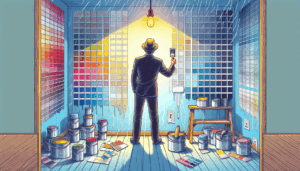A safe home is key in any family, but it is even more important when it comes to homes for vulnerable and elderly people. Thanks to technology, ensuring a safe home is much easier, a technology that allows for monitoring their health, as well as their material possessions.
Keys to achieving a safe home
From the company ADT, they have wanted to share a series of keys to achieve that desired safe home for the most vulnerable people. Let’s get to know these keys.
- Remote temperature control to prevent colds or heat strokes, using smart thermostats and programming the automatic temperature on and off through the creation of rules, or programming remote activation using the ADT Smart Security app.
- Establish activity monitoring such as door openings to know who enters and leaves the house; as well as being able to check in real time the status of the home and its occupants through the mobile device. In this way, family members can receive notifications confirming if there is movement and activity inside the house.
- Use the SOS button for an extra level of security in case there is no one at home, or the ADT Help assistance service, even when you are away from home. Both will allow, once pressed, the victim to be attended to immediately, contacting the necessary services such as ambulances or firefighters.
- Two-way audio and video cameras will allow you to view the home at all times and even speak through them with those who are in the house. These devices and their functionalities will allow for much closer contact with family members when you are not with them.
- Trust in the CRA for remote assistance and trust that in case of any alarm or alert, the professionals at the Central Monitoring Station (CRA) will evaluate the situation to provide assistance to those affected and notify the necessary assistance services such as police, firefighters, or ambulances.
- Intelligently illuminate to prevent falls. Use smart bulbs to schedule lighting on and off times, while also being able to adjust the lighting according to the required light intensity, thus adapting to the visual needs of the elderly or vulnerable people. Also, you can install smart plugs to turn off or on appliances remotely, something very useful for forgetfulness or for people with reduced mobility.
- Install smoke and carbon monoxide sensors to detect early, alert, and prevent accidents inside the home, programming the reception of alerts and notifications in case of emergency.
- Establish access control for guests by creating temporary or personalized access codes for other visitors such as friends, service personnel, or people who have access to the house for some temporary situation, thus facilitating the management of access to the property.
- Set reminders for medication taking, naps, and other needs. The use of automatic rules and alerts to voice-controlled smart devices (like Alexa, Google Home, or Siri, for example) can notify about medication taking times, nap times, and other important reminders. They are programmed directly from the mobile and remotely, with the most suitable message such as, for example: “remember to take your afternoon medication”.
Make the occupants understand the importance of the digital home and use the devices according to their own needs. By doing so, they can control the on and off of lights, the use of voice-controlled smart devices, and even ask necessary questions such as “(Alexa), what will the temperature be today”. This way, the user can have improved security, more comfort, and greater convenience.
Referrer: MiMub in Spanish









